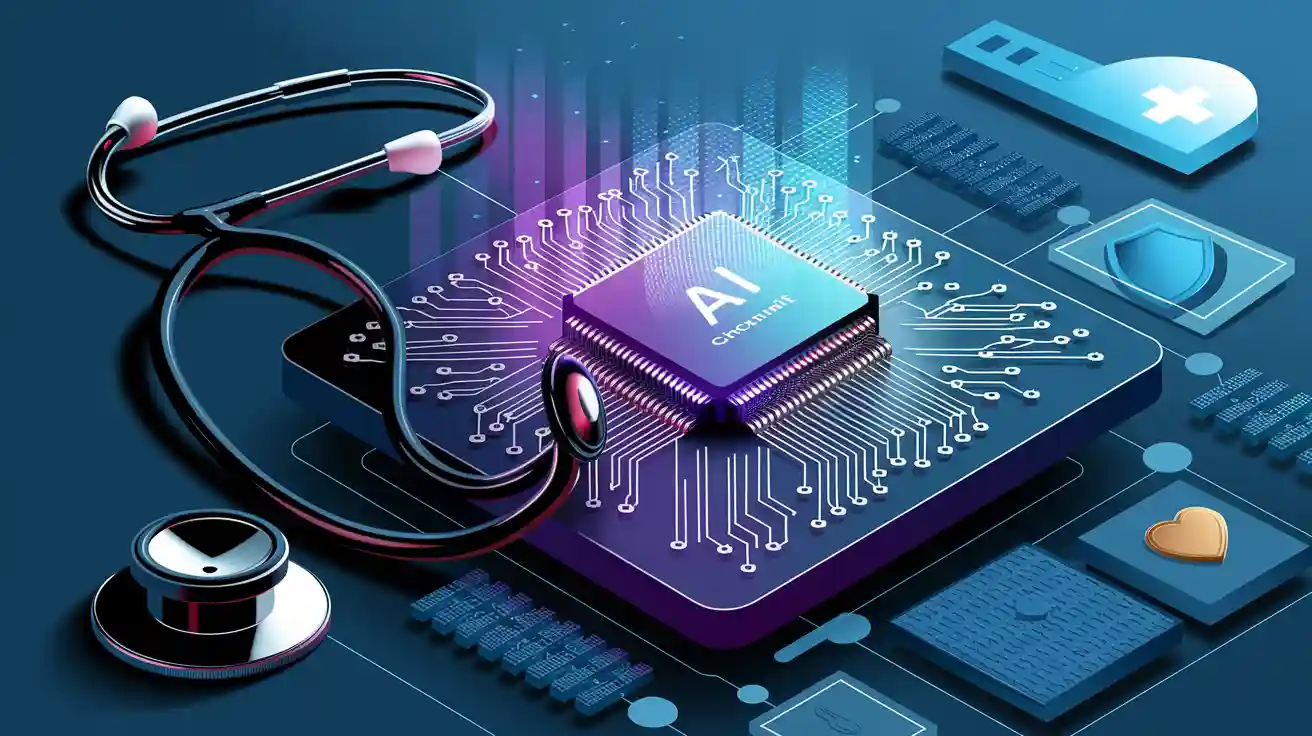Navigating HIPAA While Optimizing for Generative Engines
Navigate HIPAA compliance while optimizing generative AI in healthcare. Learn strategies to protect patient data and enhance care with ethical AI practices.


Navigating HIPAA can be challenging for healthcare ideas that aim to go far. Keeping patient info private while using smart tools is difficult. These tools can significantly improve care, but adhering to the rules is essential. You must ensure data safety and leverage technology to enhance care while navigating HIPAA regulations.
Key Takeaways
HIPAA keeps patient info safe. Follow its rules when using AI in healthcare to build trust and protect privacy.
Generative AI helps healthcare by giving better diagnoses and custom treatments. Use it to improve care while keeping data private.
Train your team often on HIPAA and AI rules. A trained team lowers risks and follows privacy laws.
Navigating HIPAA in the Context of Generative Engines
Defining HIPAA and Its Relevance to AI
HIPAA is a law that keeps patient health information private. To use AI in healthcare, you need to follow its rules. The HIPAA Security Rule explains how to keep data safe with technology. This includes spotting unusual data changes and handling information securely. The FDA also helps by making sure AI tools are safe and fair. Their rules focus on protecting patients and following ethical laws.
Following HIPAA builds trust with patients. It ensures their private information stays safe in a digital world.
Generative Engines: Capabilities and Use Cases in Healthcare
Generative engines are powerful tools for healthcare. These AI systems help doctors make better diagnoses, save money, and improve care. They create fake but useful data for research and training. For example, generative AI can find new medicines faster by studying molecules and proteins. It also handles boring tasks, giving doctors more time to help patients.
Benefit/Capability | Description |
|---|---|
Better Diagnoses | AI helps doctors find problems faster and more accurately. |
Lower Costs | Using AI can make healthcare less expensive. |
Improved Patient Care | AI offers personalized treatments that lead to better results. |
Fake Data for Research | AI creates safe, fake patient data for studies and training. |
Faster Drug Discovery | AI finds new medicines by studying molecules and proteins. |
Task Automation | AI takes over repetitive jobs, making healthcare work smoother. |
Where HIPAA and Generative AI Intersect
Using generative AI in healthcare while following HIPAA can be tricky. AI chatbots can talk to patients but must keep their info private. Ethical issues come up when AI makes medical choices, so clear rules are needed. Studies show that balancing new ideas with HIPAA rules is important. AI tools must protect patient data while helping healthcare improve.
HIPAA and generative AI meet where innovation and responsibility connect. By following the rules, you can use AI without losing patient trust.
Challenges in Navigating HIPAA While Optimizing for Generative Engines
Risks of Non-Compliance with Protected Health Information (PHI)
Breaking HIPAA rules can cause big problems for healthcare groups. Protected Health Information (PHI) is very private. If mishandled, it can lead to identity theft or legal trouble. Generative AI needs large datasets, which often include PHI. If this data isn’t made anonymous, AI might memorize it, risking exposure.
You also need to prevent leaks when AI creates outputs. For instance, private PHI could accidentally show up in chatbot replies or predictions. Weak security controls make it easier for unauthorized people to access AI systems, increasing risks.
To follow HIPAA, focus on compliance at every AI step. Get patient consent, use strong security controls, and anonymize data carefully.
Tip: Check your AI systems for weak spots that could expose PHI. Regular audits and checks help avoid risks.
Ethical and Security Concerns in AI Integration
Adding AI to healthcare brings ethical and safety issues. Patients may share private health details with AI, thinking they’re talking to a person. This mistake can lead to oversharing and privacy risks.
Another issue is transparency. Many AI systems work like "black boxes," making their decisions hard to explain. This can reduce trust and raise concerns about fairness. Ethical values like fairness, kindness, and honesty should guide how you use AI.
Security is also a big worry. AI uses lots of data, making it a target for hackers. Use strong protections like encryption and two-step logins to keep patient data safe.
Concern | Percentage of Healthcare Professionals |
|---|---|
Hesitation due to lack of transparency | > 60% |
Data insecurity fears | N/A |
Note: Teach patients how AI handles their data. This builds trust and lowers privacy worries.
Common Pitfalls in AI Implementation for Healthcare
Using AI in healthcare often faces problems that hurt its success. Bias is a big issue. AI can unfairly treat certain groups, especially underserved patients. Bias can happen at any step, from planning to using the model. Fixing it needs careful attention.
Another problem is that many healthcare workers don’t know how to use AI tools. This lack of training can lead to mistakes and harm patients. Few detailed reviews of AI tools make it harder to trust them.
Conflicts of interest among developers can also cause problems. Clear rules for data use and ownership are needed for ethical AI use.
Callout: Be honest about privacy policies. Clear communication about data use builds trust and keeps AI in line with HIPAA rules.
Strategies for Navigating HIPAA Compliance with Generative AI

Using Data Anonymization to Protect Privacy
Data anonymization is a great way to keep patient info private. By removing personal details like names or IDs, you follow HIPAA rules. AI tools can help make this process faster and more accurate. These tools keep medical records useful while protecting patient privacy.
For example, anonymized data helps in research to study illnesses or train AI safely. Methods like the Safe Harbor Method and Expert Determination are used for this. The Safe Harbor Method is simple, while Expert Determination works better for tricky datasets.
Key Points | Description |
|---|---|
Anonymization | Hides personal details but might limit data use. |
HIPAA Compliance | Needs strong methods to protect patient privacy. |
Best Practices | Use audits, advanced tools, and train staff to improve privacy. |
Tip: Use smart anonymization tools and check your data often to stay HIPAA-compliant.
Keeping AI Secure and Following HIPAA Rules
When adding generative AI to healthcare, security must come first. Check if the AI tools meet HIPAA rules before using them. Add safety features like encryption, two-step logins, and live monitoring to protect data.
Work with IT teams, lawyers, and healthcare workers during setup. This teamwork finds risks and ensures HIPAA compliance. For instance, a pharmacy app used AI to handle prescriptions while following HIPAA. It worked 30% faster without risking patient privacy.
Steps for Secure Integration | Description |
|---|---|
Evaluate AI Tools | Make sure they follow HIPAA and other rules. |
Add Security Features | Use encryption, two-step logins, and monitoring tools. |
Work with Stakeholders | Team up with experts to fix risks and follow rules. |
Callout: Always check if your AI tools match HIPAA rules before using them.
Creating Ethical Rules for AI Use
Ethical rules are key for using AI responsibly in healthcare. These rules should focus on fairness, honesty, and accountability. Work with regulators to make sure your policies follow ethical standards. Set up reviews for AI projects and involve patients and experts in decisions.
Keep checking your AI tools regularly. Look for ethical problems and fix them as needed. For example, Google’s DeepMind Health improved mammogram accuracy by 25% using ethical AI. This built trust and made results better.
Key Parts of Ethical Rules:
Make policies with help from regulators.
Review AI projects for fairness and honesty.
Involve patients and experts for transparency.
Update rules to handle new challenges.
Note: Create a feedback system to improve your ethical rules as society changes.
Teaching Teams About HIPAA and AI
Your team is important for keeping HIPAA rules when using AI. Train them well so they know the rules and how to follow them. Teach about anonymizing data, safe AI use, and ethical practices.
Hold workshops and hands-on lessons to keep your team updated on HIPAA changes. Watch their work and fix any problems quickly.
Best Practices for Team Training:
Offer regular training on HIPAA and AI rules.
Use real-life examples to teach practical skills.
Track team progress and give ongoing support.
Tip: A trained team lowers risks and makes your AI projects more successful.
Real-World Applications of HIPAA-Compliant Generative AI
Case Study: AI-Driven Patient Engagement Tools
Generative AI is changing how patients connect with doctors. Tools like chatbots and apps help track symptoms and check vital signs. They also remind patients to follow treatments, improving health routines. For example, symptom trackers cut the time for collecting health data by 65%. Blood pressure apps help patients stick to their care plans.
These tools teach patients about their health in simple ways. One platform scored 86% in user satisfaction by giving clear advice. Patients feel closer to their doctors and take charge of their health. But these tools must keep private health info safe during use.
Key Features | Impact and Benefits |
|---|---|
Symptom Tracking and Management | |
Blood Pressure Monitoring | Better treatment plan follow-through |
Patient Education | 86% satisfaction for helpful advice |
Doctor Connectivity | Encourages patients to manage their health actively |
Data Privacy Challenges | Protects shared health information |
Tip: Pick AI tools that focus on both privacy and patient care.
Case Study: Generative AI in Clinical Research
Generative AI helps researchers study data and test treatments. It even finds new medicines faster. For example, a university used AI to improve sepsis care decisions.
AI models like GPT-4 are very accurate, scoring 99.1% in tasks like giving medical advice. These tools make healthcare cheaper and easier to access. But they can still make mistakes or raise privacy concerns.
Model | Accuracy |
|---|---|
GPT-4 | 99.1% |
GPT-3.5 | 78.7% |
Uses: Health advice, diagnoses, mental health support.
Benefits: Better care, lower costs, easier access.
Problems: Privacy risks, occasional errors, unclear decisions.
Note: Regular checks and updates can fix these problems.
Key Takeaways from Industry Success Stories
Real-world examples show how generative AI improves healthcare while following HIPAA rules. AI speeds up drug discovery by predicting molecule structures. This market could grow to $1,129 million by 2032, with 27.1% yearly growth. Tools like Navina’s AI organize health records, saving time and reducing mistakes.
Application Area | Description | Numerical Evidence |
|---|---|---|
Drug Development | Finds molecules faster for new medicines. | |
Sepsis Treatment Simulation | Tests treatments for better results. | N/A |
Administrative Task Management | Organizes health records and creates documents. | N/A |
These examples show how AI can improve care and save time. Using these tools responsibly ensures better health outcomes and efficiency.
Callout: Use new technology, but always protect patient privacy and follow ethical rules.
Following HIPAA rules while using generative AI keeps patient info safe. It also helps create new ideas in healthcare. To do this, focus on important steps like strong encryption, regular checks, and hiding personal details.
Key Practice | Description |
|---|---|
Strong Encryption | Protects data during storage and use. |
Regular Checks | Finds weak spots and ensures rules are followed. |
Hiding Personal Details | Removes names and IDs for safe AI research. |
Staff Training | Teaches teams about HIPAA and safe AI practices. |
Steps to Take:
Hide personal info to allow safe research.
Protect AI systems with encryption and regular reviews.
Train your team to follow HIPAA and use AI carefully.
Tip: Safe and smart use of AI builds trust and improves care.
FAQ
How can you make sure generative AI follows HIPAA rules?
Hide patient details, encrypt data, and check systems often. These actions keep private information safe and meet HIPAA standards.
Tip: Confirm your AI tools follow HIPAA rules before using them.
Can generative AI help with diagnosing patients?
Yes, but it must follow ethical rules and HIPAA laws. Use it to assist doctors, not replace their decisions.
How do you teach teams about HIPAA-safe AI practices?
Hold workshops and hands-on lessons. Show them how to hide data, use AI safely, and follow ethical rules. Regular updates keep them aware of new changes.
Note: A trained team lowers risks and helps AI work better.
See Also
Navigating Ethical Issues in Generative Engine Optimization
Steps to Effectively Implement Generative Engine Optimization
The Importance of Generative Engine Optimization for B2B SaaS
Understanding Generative Engine Optimization: What You Need to Know
Top 5 Industries Benefiting from Generative Search Technology





